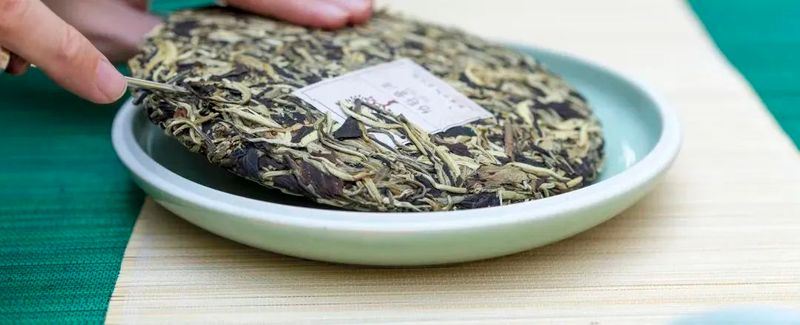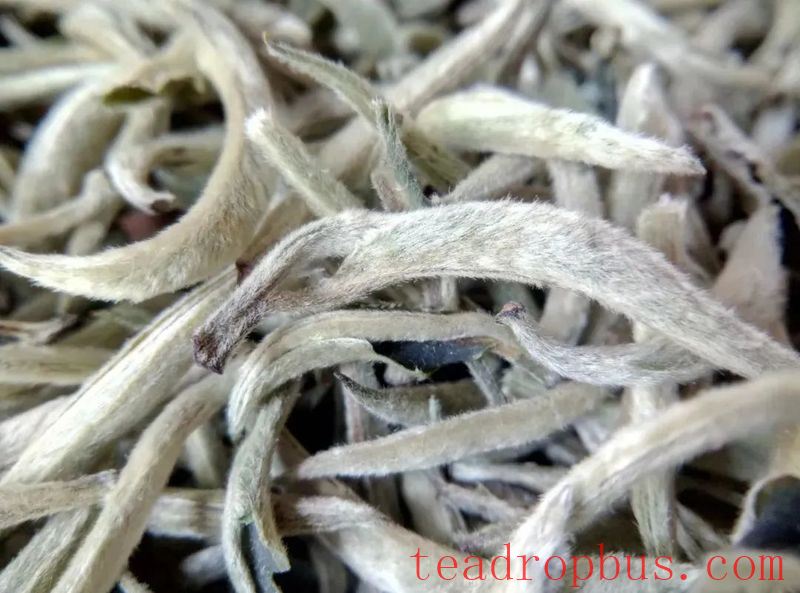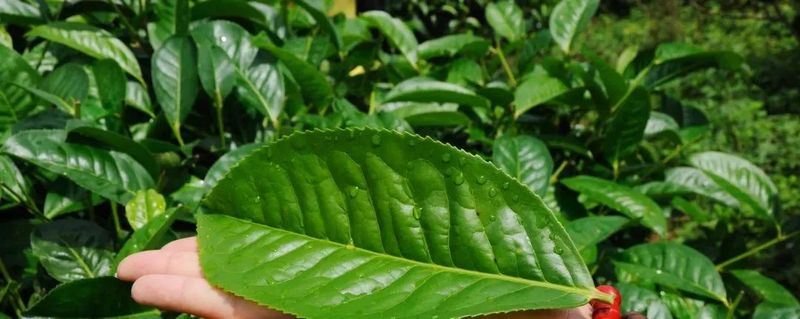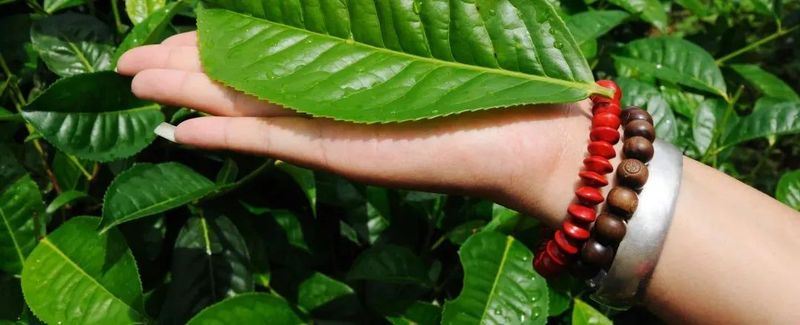Simplicity is the ultimate sophistication for Yunnan large-leaf white Tea.
The simplest definition of Yunnan white tea can be quite literal, meaning “white tea from Yunnan.” However, this can often lead to misunderstandings. For example, does it refer to “white tea produced in Yunnan” or “white tea made from Yunnan tea leaves”? Is it “a tea that appears white” or “a tea processed using white tea methods?”
There are many teas on the market called white tea, and the concepts can easily become confusing. Even today, some people still think of Anji white tea when they hear “white tea,” which is clearly an inaccurate definition that can lead to misunderstandings. Therefore, before accurately defining Yunnan white tea, we need to establish a standard to rely on.
Although there is no national standard for Yunnan white tea yet, since Yunnan white tea belongs to the category of Chinese teas, the standard it relies on is the traditional white tea among the six major tea categories.
In his article “Theory and Practice of Tea Classification” published in the “Tea Industry Bulletin” in 1978, Professor Chen Chuan pointed out: “Based on the system of production methods and quality, as well as customary classification, according to the order of the content of flavanols, tea can be divided into six major categories: Green Tea, Yellow Tea, dark tea, white tea, Oolong tea, and black tea.” He also specifically mentioned in the classification of white tea: “The characteristic quality of white tea is its abundant white down, light-colored liquor, or colorless when first brewed.”


He required that the natural oxidation of flavanols should be delayed lightly, neither destroying the enzymatic action and inhibiting oxidation nor promoting oxidation, but allowing it to change naturally. Generally, the process involves withering and drying. Here, Professor Chen Chuan strictly defined white tea in terms of both processing method and quality, making it distinctly different from the other tea categories within the six major types. The Yunnan white tea we are referring to here is also part of the white tea category among the six major tea types.
However, due to geographical location and differences in raw materials, Yunnan white tea has qualities distinct from those of other regions. Therefore, the raw material for producing Yunnan white tea must come only from fresh tea leaves within the Yunnan region.
With these two premises established, the concept of Yunnan white tea becomes clear: Yunnan white tea is made from fresh tea leaves from tea trees within Yunnan that meet the environmental conditions of the origin, processed according to the white tea methods of the “six major tea categories,” and possesses unique quality characteristics. Yunnan white tea is divided into two major types: loose tea and compressed tea.
Due to the fact that the main raw material for Yunnan tea is Yunnan large-leaf tea, combined with the definition of Yunnan white tea, the definition of Yunnan large-leaf white tea was also born.

For example, the group standard “Yunnan Large-Leaf White Tea” (T/YNTCA 007-2025) implemented in 2025 states: Made from fresh leaves of Yunnan large-leaf tea trees, this white tea is produced through specific processes including withering, drying, refinement, steaming and shaping followed by drying, or shaping without steaming and then drying, and packaging. It is classified into Yunnan white loose tea and Yunnan compressed white tea based on appearance.
The unique geographical environment has given rise to Yunnan's large-leaf tea plants, and thus Yunnan tea. A brief review of the history of Yunnan tea reveals that whether it's the renowned Pu'er tea, the once-popular Yunnan black tea, or Yunnan green tea, all were promoted and popularized by outsiders who recognized business opportunities early on.
Why did they come? It is clear that they came for the large leaves. This indicates that the historical preference for small-leaf tea has changed. As living standards have improved, consumers' pursuit of tea quality has evolved beyond mere appearance and sweetness; they now demand richer flavors and longer-lasting brews.


There are numerous varieties of Yunnan large-leaf tea, and the diversity of these varieties determines the richness and individual characteristics of the tea. These large-leaf varieties have large leaves and abundant buds, with high water-soluble content, resulting in rich aroma and full-bodied flavor – the thickness and longevity of the tea.
The rich flavors and aromas of large-leaf varieties serve as the foundation for the transformation of tea aromas. In terms of taste, tea made from large-leaf varieties is stronger, more layered, and more durable than tea made from small-leaf varieties. The aroma lasts longer, and the antioxidant effects are stronger than those of small to medium-leaf varieties.
Under the influence of outsiders, local Yunnan tea experts began to awaken. One of the key assets for the revival of Yunnan tea is Yunnan large-leaf tea.
Large-leaf varieties have supported the long-standing tradition of Pu'er tea. Although Pu'er tea experienced a century-long hiatus, it was rediscovered and loved in coastal areas like Hong Kong, Taiwan, and Guangdong, which then reintroduced this culture to the mainland.
Pu'er tea, thanks to its large-leaf raw materials and processing methods that preserve vitality, can maintain its vitality over a long period. This is also true for black tea, which, due to its high-quality raw materials, resulted in the creation of famous teas like Yunnan black tea. This includes green tea as well, which exhibits distinct quality characteristics compared to teas from other tea-producing regions.
Therefore, Yunnan white tea, relying on the raw materials of Yunnan large-leaf tea, also has its own unique characteristics and cultural origins. Although Yunnan white tea started relatively late, tracing the development history of tea-making techniques reveals that the earliest tea-making technique appeared during the Spring and Autumn period when tea was used as a sacrificial offering. There was only one step in the process: sun-drying, similar to the processing method of some white teas today. From this perspective, white tea can be considered the oldest type of tea in China.

When the world began to recognize that the origin of tea trees is in Yunnan, where large-leaf tea trees predominate, Yunnan white tea, processed using primitive sun-drying techniques, became the progenitor of the six major tea categories. From Pu'er to Yunnan black tea, from Yunnan green tea back to Yunnan white tea, it can be said that Yunnan large-leaf tea has supported the entire Yunnan tea industry.
The excellent genetics of large-leaf varieties, the unique geographical advantages and climate, and the perfect natural environment have endowed Yunnan large-leaf white tea with exceptional qualities. The white tea processing method does not involve pan-firing or rolling, consisting of only withering and drying, making it the tea category with the least destruction of internal substances. In simple steps, it achieves the perfect transformation of internal substances, producing high-quality Yunnan white tea. This is the perfect embodiment of simplicity being the ultimate sophistication.
Originally published in Pu'er Magazine
If there are any copyright issues, please contact us for removal.